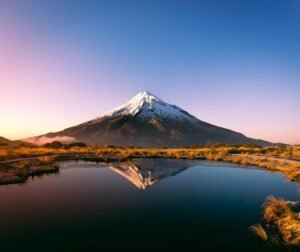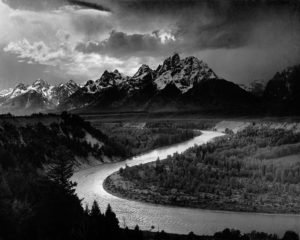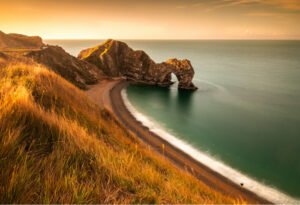Good planning is essential for any type of photography, but it’s especially important when shooting landscapes. Here are eight tips for planning landscape photography.
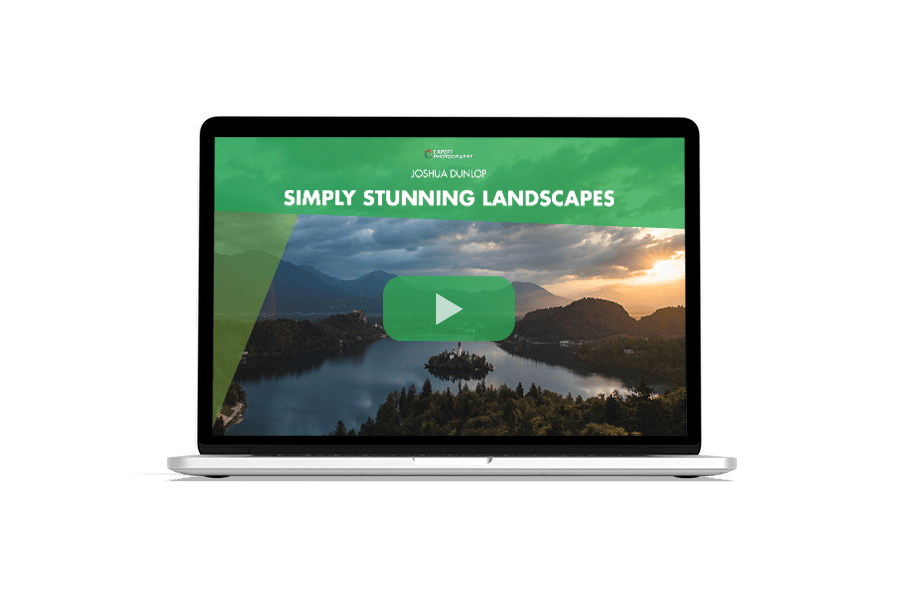
Planning Landscape Photography Photo Shoot
The planning stage includes several aspects, and each of them should align perfectly to make the whole structure work. There are basically two approaches – happy snapping and proper planning.
The former is good when you want to have fun and unwind with no serious expectations. Sometimes the stars align. And you get a great shot. But chances are slim.
The latter approach is about planning, improving chances, and using your mind and skills efficiently. I strongly recommend planning every single shoot to get the best possible landscape pictures.
1. Weather in Landscape Photography
The weather has the most significant impact on the final landscape pictures. The cloud cover, the wind, tide, humidity – everything plays a role. There are no set rules because it differs for each scenery type.
Cloud Cover
I use http://accuweather.com/ to fetch this info as it provides hourly data. The other site to check for detailed cloud cover is Skippy Sky, which looks confusing. But the data is unique.
High clouds typically produce better colors and start to lighten up much earlier than low clouds.
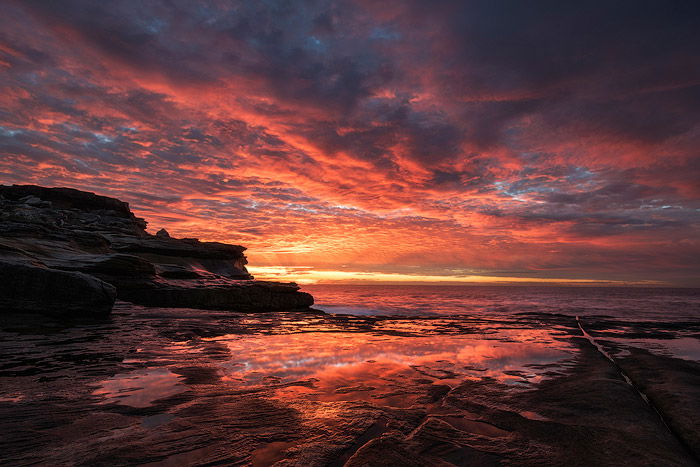
For the general landscape photo shoot, I wouldn’t go out if the cloud cover is less than 30%. For a morning forest walk, I could easily go out when the sky is clear. The same clear sky works fine for shooting some of the seaside lifestyle photography.
The general idea is to think in advance about what kind of cloud cover works for your area and go from there.
Wind
The force and direction of the wind can also play a role in decision-making. For instance, a strong wind blowing from the sea will surely cover your lenses with a salty spray. So it could be wise to go to the cliffs, for instance.
But the same strong wind blowing towards the sea is dangerous when you climb those cliffs, so it’s better to stay at ground level.
If the plan is to shoot reflections in a calm lake, look for weak winds up to 6 mph (10 kph).
The same thing applies to fog. Strong winds won’t let it form.
And the wind is very important for long exposures. The faster the clouds move, the more prominent cloud trails they produce. So if the plan is to create some movement in the sky, strong winds work better.
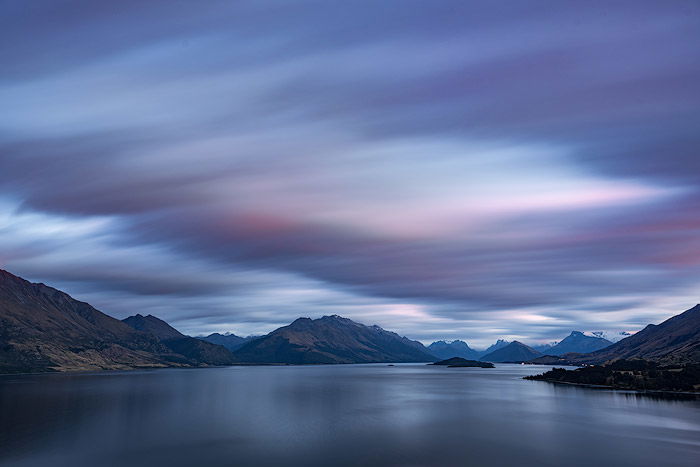
Humidity
Photographers adore fog and haze. Weather websites have general predictions. And sometimes, we could miss perfect fog if we skipped physics in school. For fog to form, we need a temperature lower than the dew point (shown on Accuweather).
The dew point calculation includes humidity, of course. But the weather sites don’t take into account that certain areas have higher humidity than average. Like, near the lake or the river.
So if the forecast isn’t showing fog, but the temperature is just 1 to 2 C higher than the dew point, and the general humidity is high enough (> 85%), there’s a good chance of witnessing morning fog.
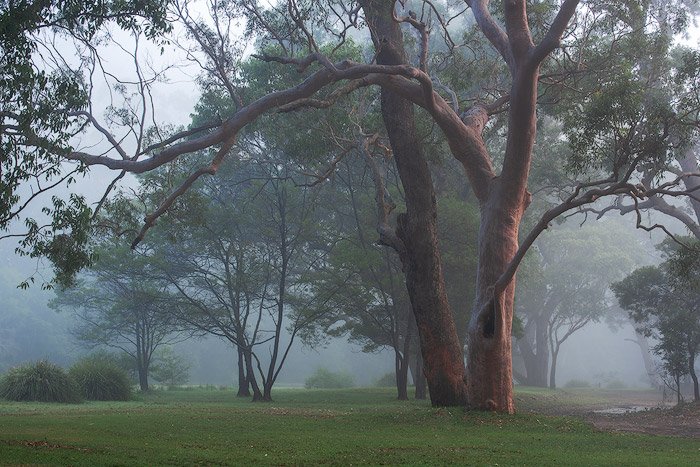
2. Pick the Right Time of Day and Year
Some areas work best during the sunrise. Some work only for sunsets. It’s up to the photographer to figure out when to arrive.
Have a look at the objects you want to photograph and envision the light coming from the East or the West and see which highlights the features better.
Walk around and try several frames. And then you’ll know which side you need the light coming from.
The hard part here is that the sun’s position changes throughout the year. And you need to include it in planning.
The easy way to determine the exact sun position is to use SunCalc right in your browser. The other way is to use apps like “PlanIt! For Photographers”, TPE, or PhotoPills.
They also show this data for any day, time, or year. And they also have a virtual reality mode where the app shows sun position overlaid on the camera picture of your phone.
Make notes. Don’t rely fully on your memory. There are too many places and conditions to remember.
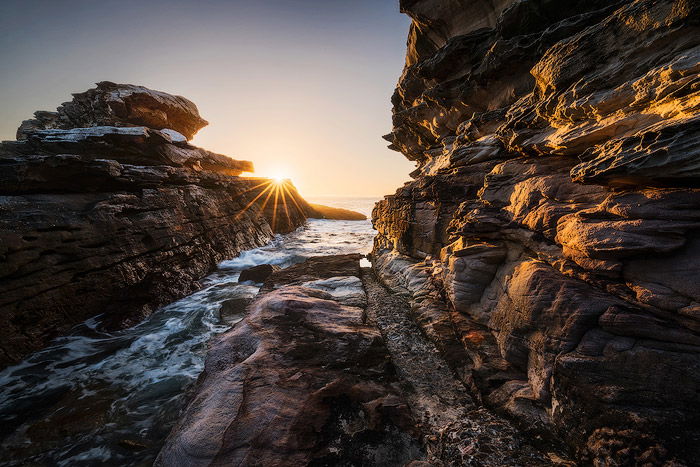
3. Research on the Spot
The best way to prepare is to research on the spot. Come over well before the best light, walk around, and take notes of the best spots and points of view. Envision where the sun is going to be at certain times and see what’s the best position to stand.
This research is also good for safety – you get familiar with the area. This is when you determine if the area works for sunsets or sunrises, how a long exposure shapes the terrain, etc.
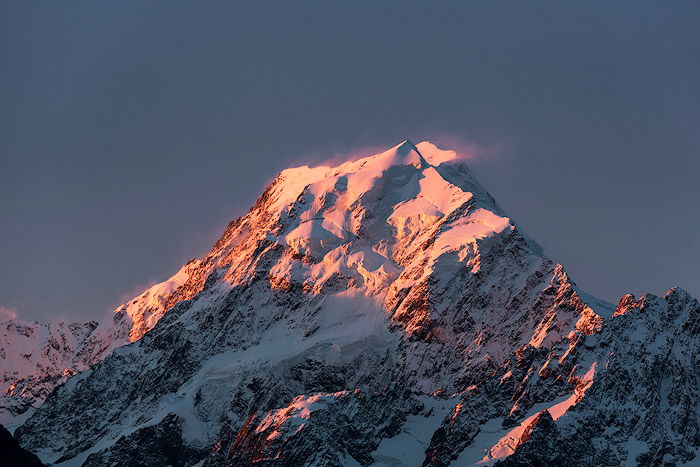
Another aspect of this research is to discard certain locations. You could see some fantastic photos on the internet, and in reality, it is completely different.
It could work only for a certain season or tide level or only in a certain light. Or some landmark has been destroyed. Or it’s so full of photographers that it is no longer possible to do any serious photography.
4. Research Online
Online research is my favorite way to find locations. The number of approaches you can take is unlimited. This is what I do to find the best spots:
- Images on Google Maps. People upload tons of photos right to the maps. Of course, they are mainly touristy, not artsy. But that’s good for us as we could find some not-so-famous spots.
- Google Maps. This approach is different. You turn on satellite view and scan the area to find something interesting just by looking from the top. Once you have several candidates, you’ll need to research them further using other methods.
- 500px search. Photographers often set a location for their photos. They could also include it in tags or descriptions. And the search reveals all of it. I guess you could do the same on Flickr. But you’ll have way more data to dig through. I have found a good number of nice undiscovered spots using this method.
- Local Photo Tour Buides. Some tour guides publish their tour itineraries. And you could stalk the best locations if you are planning a trip. Once you have a list of locations, you’ll need to research them individually to find exact spots. Google something like “photography workshop Sydney” or “photography tour Australia” and then go through the sites. Not all of them will have a list of locations but some will.
- Trip Advisor. Not so much photographer-oriented. But it could also provide valuable textual data when you already have a list of locations. People here also upload photos, and it’s easy to understand if the place holds any photographic potential.
- Use Apps. I have already mentioned a few Android and IOS apps and the SunCalc website. You don’t need to be there physically to determine if the sun, moon, or Milky Way is in the right spot.
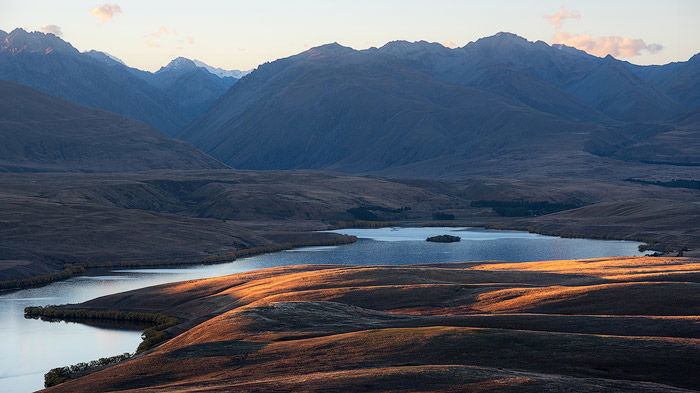
5. Look Out For Special Conditions
It is not wise to visit a location just once. Many areas look ordinary but have a huge potential during certain weather conditions. You need to take notes and envision what the area could turn into when something special happens.
A great example is Centennial Park here in Sydney. On a regular day, it looks nice but ordinary. But I figured it used to be a swamp. It means it holds water for a long time.
I went there right after the rain, and I was rewarded with a completely new landscape. Could you guess I made this shot right in the middle of the city?
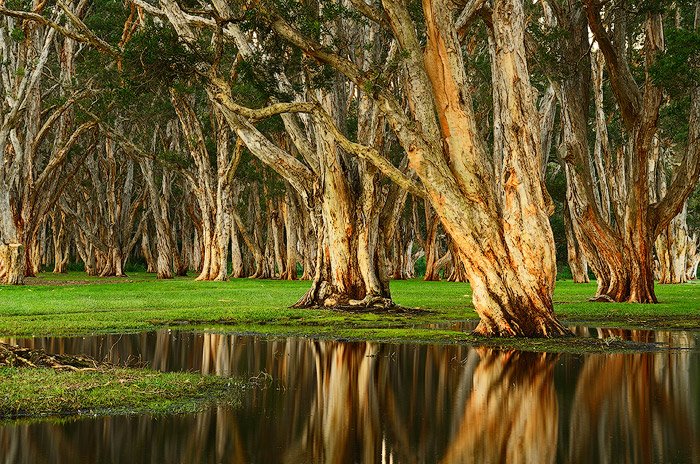
Other special conditions include the sun’s position, the Milky Way’s position, tide, rain, fog, storm, tornado, etc. Use your imagination.
Do not run away immediately if the weather is bad. Remember an old saying about the rainbow after the rain? Give nature a chance. Maybe it shows some magic. And patience leads to some unbelievable results.
6. Plan Enough Time
We all know (I suppose) that the best time to shoot landscape images is approximately one hour before sunrise to one hour after sunrise and one hour before sunset to one hour after sunset.
But it doesn’t mean we have to arrive exactly one minute before the best light.
These timeframes can be easily extended depending on weather conditions. For instance, the sun can produce crepuscular rays two hours before sunset. Or the clouds can lighten up 75 minutes before sunrise in extreme cases.
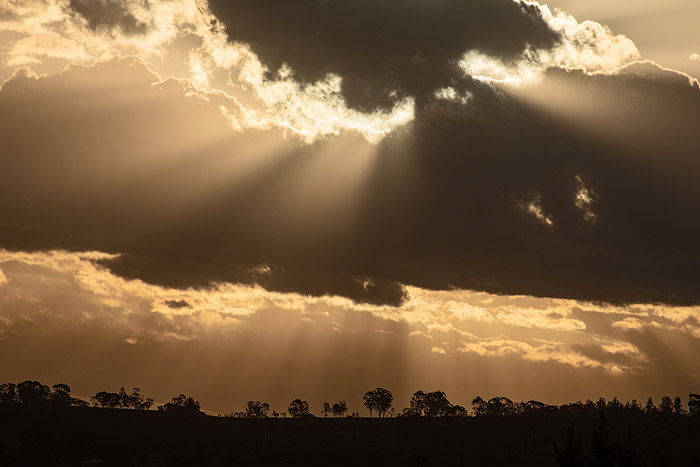
As for me, I need some extra time to get myself in the right mood. I can’t jump out of the car and start shooting right away.
I suppose it could be the same for others. Walk around, breathe in the air, have a look at various elements, calm down, clear your mind, etc. And when the light comes in, you’ll be ready.
7. Research Less Famous Places
Some places have been photographed for decades. It’s a little presumptuous to believe that you can shoot this particular landmark better than thousands of photographers before by visiting it only once. Or at least that you can make a unique shot.
I mean, you surely can. But what are the odds? You get yourself stuck in unnecessary competition and comparison. And finally, you’ll be biased with the composition choice because you’ve seen it all.
Wrapping up, shoot famous places but focus on less crowded and photographed areas. Find new gems, discover places, and build your own secret spots.
One day you could blast off a photography tour, and you need those unique places. No one will attend a tour based on a spot they can Google in two minutes.
I have described some ways to discover new places earlier in this article. But nothing beats you with a backpack roaming around, taking notes, and looking for wonders. It doesn’t have to be a place in the absolute wilderness where no one has ever been before. It could easily be a good underrated location.
A good example is Wanaka Tree. I went there and was baffled by the number of photographers standing in the same spot doing the same shot. So I walked around and found this frame just 200 meters away.
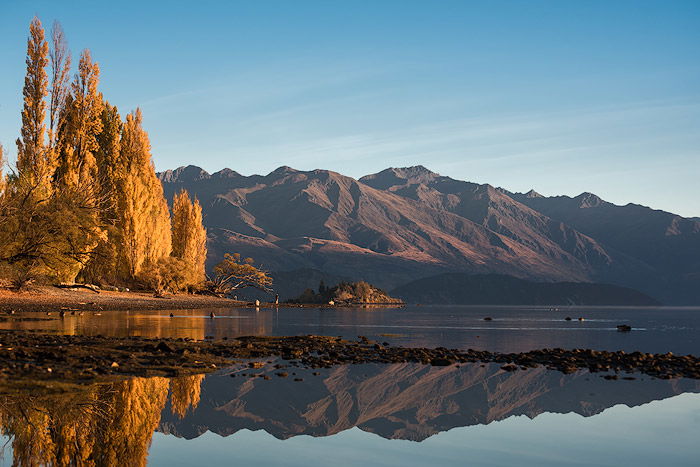
8. Pack the Right Gear: From Clothes to Tripods
Packing right is often overlooked. But I must assure you, it is very important. Proper equipment in your bag could save a trip. It’s also nice to have a checklist to go through before going out. Create one for yourself using some of the tips below.
Warm clothes
If the days are hot, it is easy to forget that the nights can be much colder, especially if it isn’t summer. Staying in a spot with minimal movement is not the same as trudging through the forest with a backpack.
Bring warm clothes. I also have spare socks for the way back in case my feet get wet during the shoot.
Rain and Wind Protection
If there is a chance of rain, take an umbrella. An umbrella is too old-school, you say? Well, it’s not for yourself, it’s for the camera!
An umbrella is very useful to protect your camera from the rain, obviously, but also it can resist wind, which could easily ruin your long exposure shot. Get a raincoat for yourself.
Tripod
Believe me, it’s very sad to forget a tripod or a tripod plate. Just check them before going out to avoid disappointment.
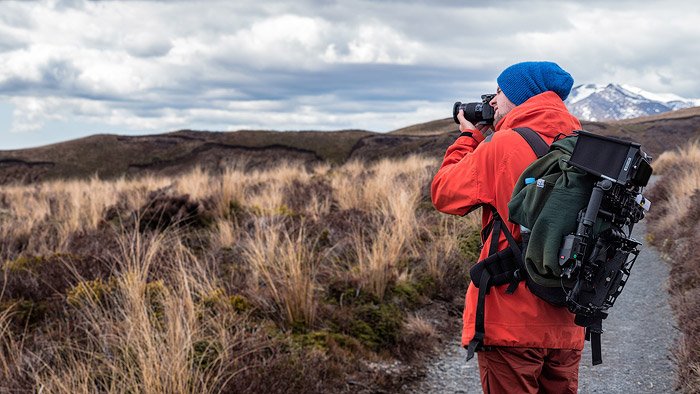
Battery
Check the battery before going out. Take a spare one if you have one.
Memory cards
The same applies to memory cards. Verify that one is inside your camera and bring another one, just in case.
Extra Lenses
This advice is my favorite one. Do not set limits for yourself! If the plan is to shoot wide-angle seascapes, take a telephoto too. There could be a dolphin or a shark in the distance.
Do not take everything you have because you still need to move somehow but guess the possibilities and cover as much focal range as you can.
Conclusion: Planning Landscape Photography
There is a place for luck in the photographer’s life. But it plays a much smaller role than some would think. The most significant role is reserved for proper planning. Of course, you can’t plan everything. And weather forecasts fail too.
It’s more about being prepared for several scenarios. We need to be in the right place at the right spot. And that’s exactly what planning is all about.
Looking for more techniques for stunning landscape photos? Check out our new post about using the Orton effect in landscape photography next!



